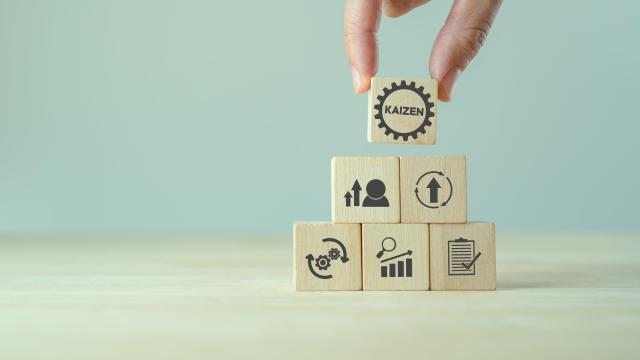We love productivity techniques and organisational hacks that make work easier and more efficient. The Japanese are especially adept at churning these out, as we know from their Kanban scheduling method, so let’s look at another productivity process from the Land of the Rising Sun: kaizen. The man who took the philosophy mainstream, Masaaki Imai, died earlier this year, but leaves behind a legacy of productivity and efficiency we can all learn from.
What is kaizen?
In Japanese, “kaizen” translates, essentially, to “improvement,” and that’s the goal at the heart of the method itself, which encourages individuals at all levels of an organization to work together to continuously improve everything about a company. When everyone from the boss to the intern is in on the plan, the idea goes, the place will simply be more efficient, and everything will always be getting better. This is done through standardisation and the implementation of uniform processes.
A good example of this is within the Toyota production system: If there is any issue or abnormality detected by any worker in a factory, they stop the production line, and employees and supervisors work together to resolve the problem. As Toyota puts it, this “humanizes the workplace”, and the standardisation involved empowers every individual in the organizational structure to make meaningful changes. This is all part of a system called Plan, Do, Check, Act (usually known as PDCA), which works perfectly within a kaizen framework. The PDCA cycle goes around and around, meaning once you’ve planned, you keep doing, checking, acting, and planning again, based on results, so you’re always improving. While you’re doing all that, you have to keep the kaizen principles themselves in mind. More on that below.
How does kaizen work?
In addition to incorporating PDCA, kaizen has its own set of five foundational principles:
- Know your customer: Cater to your customers or clients and take care to identify their needs and interests, plus how you can serve them from whatever level you’re at.
- Let it flow: Eliminate waste, both physical and theoretical—meaning don’t take unnecessary steps, don’t clutter the space, and be direct in doing what you need to do.
- Go to Gemba: Gemba is the Japanese term for “actual place.” This means you should always be purposeful and direct about getting to where you need to be—which is likely to be where the action is happening. Don’t delegate anything you don’t have to, wait around on anything, or sit on the sidelines.
- Empower people: Encourage people in your organization, whether you’re their superior or they’re your peers, and make sure everyone is aligned in the common goals of the company and forward movement.
- Be transparent: Demonstrate your productivity with hard data and results and make sure everyone is always up to date on processes, developments, and goals.
Implementing all five of these in a working environment, per kaizen’s adherents, is the key to unlocking a culture of continuous improvement. If you want to learn more, there are dozens of books out there about the methodology, but you should start with the original: Masaaki Imai’s Kaizen: The Key to Japan’s Competitive Success.

Leave a Reply
You must be logged in to post a comment.